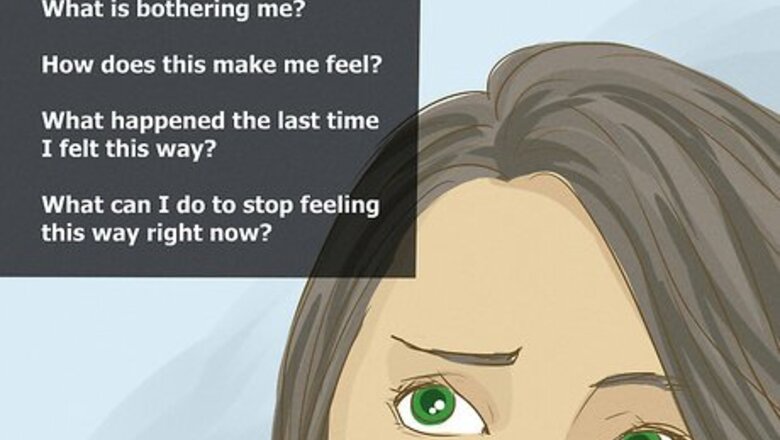
views
Calming Your Thoughts
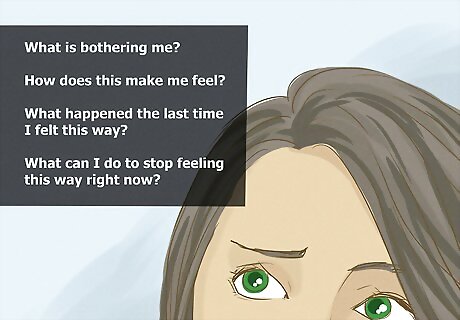
Use realistic positive thinking. Always try to pinpoint the source of thoughts that worry you. Work through these thoughts by asking yourself the following: What is bothering me? How does this make me feel? What happened the last time I felt this way? What can I do to stop feeling this way right now? For example, say you are distressed about your parents fighting. You might start by identifying that this is in fact causing you distress. Ask yourself how it makes you feel. Does it make you feel scared for the future of your family? Ask yourself what happened last time your parents fought: did they make up and get along for a time afterwards? Think back on some positive family interactions that occurred after the last time your parents fought. Because the mind is more sensitive to negative than to positive information, it is important to make that much more of an effort to use positive thinking.

Change your thoughts. Do your best to think about something hilarious or something that generally makes you really happy. You can also try thinking about what is making you distressed in a different light. For example, try thinking about a really funny internet cat meme or something sweet that your partner did for you. To think differently about what is making you distressed, consider this example. Say you are distressed because you failed a test. Try instead thinking about your bad grade as a challenge that you can surmount on the next exam by studying harder. Another way to try to change your thoughts is to engage in self-compassion. To do this, try engaging in compassion-focused attention. This means to deliberately pay attention to your experiences as they unfold in the moment; do not judge your experiences but instead do your best to think about them with gentleness, empathy, and kindness. You can also try engaging in mindful breathing. To breath mindfully is to direct your attention to the sensations involved in your breathing, and to re-direct your attention to your breathing when your mind begins to wander to other thoughts or feelings. Although these methods can be attempted on your own, you may see the best results by working together with a therapist. Try engaging in compassion-focused imagery. Think about what your ideal image of compassion looks like. Your image should bring to mind kindness and warmth. Is it someone caring for a cute animal or baby? Is it a scene in nature? Once you have picked your image of compassion, visualize it. Imagine the compassion it generates flowing through others and through yourself. Try distracting yourself by making a short mental list of other things that are better to focus on, such as plans for the weekend, new movies you want to see, or things you're passionate about. Have a few topics ready ahead of time so you can stay prepared.

Be gentle on yourself. There are no such things as mistakes, there are only lessons. Every time you reason that you have failed, look again for the lessons. This isn't an exercise in being Pollyanna-ish or unrealistically optimistic; it's about identifying the things that you can gain from the experience rather than going over what went wrong. For example, if you fail a test, this can teach you that you might need to ask for tutoring or teacher help; it might mean that you didn't study in an organized fashion and need to implement such a system going forward.

Create distance. If you are feeling overwhelmed by your feelings and like you are about to harm yourself as a way to cope, try creating some distance between yourself and your thoughts. To gain distance, try imagining yourself as an outsider who is viewing the situation that is making you sad. In addition, try thinking about yourself in the third person (i.e., she shouldn't harm herself because it won't really address the root of the problem).
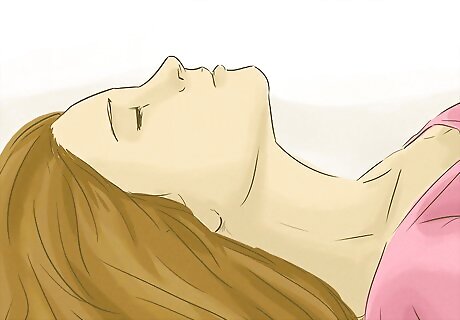
Be mindful. If you are distressed about something that is not relevant to the present moment (i.e., something that happened in the past or will happen in the future), try focusing on just the present moment. Pay full attention to all of your bodily sensations, all the different kinds of information coming in through each of your senses, and all of your thoughts about those perceptions and sensations.
Calming by Changing Behavior
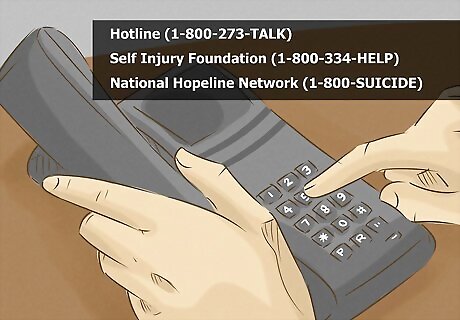
Talk to people when you feel down. If you are comfortable doing so, talk with trusted friends and family members about how you are feeling. You can also seek out help from a counselor, therapist, or other independent health professional. If you can't afford it, search online for advice about free services or budgeting (try googling free therapy + your city name). There will always be something available to help a person in distress. Another option is to talk with other people who self-harm; they may provide a unique sense of social support that helps calm you down. You can also reach out to various hotlines. The 988 Suicide and Crisis Lifeline (call or text 988) or the National Hopeline Network (1-800-442-4673) are two options for people who live in the United States– these are 24-hour crisis hotlines available for people who are considering self-harm or suicide. If you live in Canada, you can call or text 988 to reach the Suicide Crisis Helpline. Please call the suicide prevention hotline for your country if you are outside of the United States or Canada.

Do something that you are proud of. Find a hobby, activity or pursuit that lets you shine. Keep involved in it regularly. This may help you to feel better about yourself and distract you from thoughts of self-harm. To find a hobby you like, try out several until something you like sticks. You can try this website for ideas: http://discoverahobby.com/ You can also ask friends or family what their hobbies are; sometimes it is funner to do a hobby if others you know do it as well.

Try smiling. You might become calmer merely by smiling, even if you don't feel like it. This is called the facial feedback hypothesis; it suggests that the relationship between emotions and the face is bi-directional: that although we typically smile when we feel happy, smiling might actually cause us to feel happier or otherwise help us to be less distressed.

Distract yourself. Rather than thinking about what is distressing you, try cooling off by watching a movie, reading a book, or hanging out with friends. If you do take in media, do your best to avoid anything that makes self harm look acceptable or cool.

Try cognitive restructuring. Although this is no substitute for treatment from a mental health professional, you can still try this technique and the others on your own as a way to calm your thoughts of self-injury. In this technique, try to identify a distorted thought, then challenge it. For example, let's say you think that life is hopeless because you have no friends. Challenge this by doing the following: think hard about whether it is in fact true that you have no friends. Think about whether you have ever had any friends in the past. If you have, maybe you can get more in the future. Think about steps you might take to get new friends. For example, you could try new hobbies out on http://www.meetup.com.
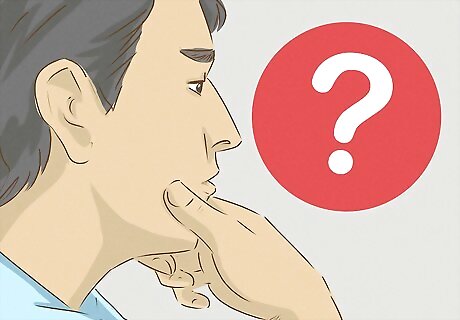
Try Socratic questioning. This technique, which involves posing questions to challenge the accuracy of one's thoughts, can help you figure out the usefulness and validity of the thoughts that are causing you to think about hurting yourself. For example, you if you feeling that you are going to hurt yourself in order to feel something, because you feel numb, you might ask yourself the following: "what would be an alternative way to feel something other than pain (what about trying something safer and more pleasurable")?
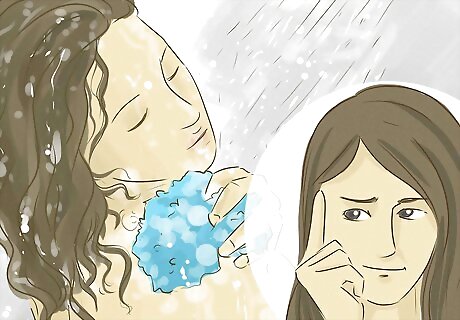
Try replacement techniques. This involves replacing your self-injury behavior with aversive but ultimately not harmful experiences. This will allow you to 'self-injure' without your behaviors actually being injurious. For example, you might eat a hot chili, hold an ice cube in your hand, or take a cold shower instead of engaging in more harmful behaviors.
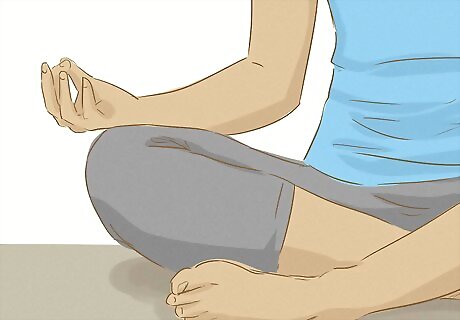
Perform "Opposite Action." This is a technique that is part of Dialectical Behavior Therapy, which has been successfully used to treat people with Borderline Personality Disorder. People with BPD frequently experience suicidal thoughts and impulses, and may also use self-harming behaviors. Opposite Action involves several steps: Use mindfulness to notice what you are feeling. Identify the action urge, such as the specific way you want to self-harm. Try to locate what prompted this feeling. For example, perhaps a friend has ended your relationship, and you are experiencing self-harming thoughts because you feel like no one will ever be there for you. Do not judge your emotion as "bad" or try to suppress it. It's the urge that is the problem, not the emotion. Emotions just exist. Consider whether your emotional impulse is helpful or not helpful. Would harming yourself help you address your deeper feelings of fear that no one will be there for you? No. Do the opposite of the emotional impulse. If your impulse is to self-harm, do something that is the opposite. For example, you might try to write yourself a kind letter, or practice a loving-kindness meditation.

Join a support group. Sometimes it can help to be around others who are dealing with the same issues. There are a couple ways to search for a support group to join: Check out this website to see if there is a support group meeting that takes place near you: http://www.selfinjury.com/admissions/locations/ Try searching the internet with the terms "self-injury (or self-harm) support group + your city's name or zipcode".




















Comments
0 comment